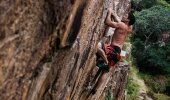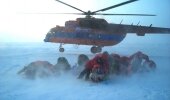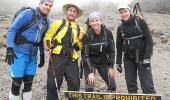Words: Terence Vrugtman | Photos: www.adventurelife.co.za - @Advenlife | Video: www.dwsworld.com
Deep-water soloing (DWS), also known as psicobloc, is a form of solo (without gear) climbing. It started in the late 1960s as a way to cool off after a hard day of climbing, but the real development of this style of climbing began in the 1990s, with the release of King Lines, a film about Chris Sharma pushing himself to the limit in the Mediterranean. Today, DWS is recognised as a sport in its own right.
Enjoyed by climbers around the world who relish the opportunity to push the envelope of technical climbing, DWS is one of the purest forms of climbing, as you are climbing without a harness or ropes. The difference between this and free soloing is that with DWS, you are doing it above water. It is normally practised on sea cliffs at high tide, but as the sport has developed, it has also made its way to rivers, dams, and even some swimming pools. When the time comes or a grip is unreachable, the climber will drop into the water below and swim to safety.
While this sought-after activity boasts a number of famous spots internationally, finding a DWS spot in a nearby South African town is like finding that extra Easter egg two weeks later in the garden – it goes down a real treat! Neil Margetts, head of the SA Climbing Academy and organiser of the first SA DWS competition explains, "The four most famous places in the world are Mallorca Island, just off the coast of Spain, Thailand, Vietnam, and Romania. In South Africa, we have few DWS climbs in the kloofs of Magaliesberg, Morgan’s Bay in the Eastern Cape, and there is one area along the Orange River in the Northern Cape.
As a result of not having the coastlines or combination of mountains and river to support it, DWS has never really taken off in SA, until now! In late 2013, the Johannesburg section of the Mountain Club of South Africa (MCSA) found a haven hidden outside of Bronkhorstspruit, in Gauteng. How someone stumbled on this gem no one knows, but everyone is grateful for this incredible discovery. With more than eight routes graded from 19 to 28, this climbing spot is available to any climber (a permit from MCSA is required). At 20 m high and overhanging a deep, natural pool along the Wilge River, this location is perfect for a sweet day out.
Adds Margetts, "Last year after the MCSA purchased the property, we were planning a meet there and I came up with the idea of putting up a slack line above the waterfall and including DWS. Having done DWS before in Vietnam and some of the Magaliesberg kloofs, I had an idea of what was needed. I went there to see the feasibility and the location proved to be perfect. Climbable sections of the cliff are 10 m to 12 m high (you don’t want to go much higher), slightly overhanging so you fall nice and clear, and the water is deep enough for safe landings. We had a trial meet in November, where we introduced the idea and it was a success. We then organised a competition, held in March this year at Wilgepoort, Mpumalanga, which was also a great success.
Expressing his feeling about DWS, Gauteng-based climber Kent Jennings said, "The attraction to DWS was mostly curiosity, as we don’t have many options to try this type of climbing here in SA, and it is also similar to bouldering, my favourite form of climbing.
DWS is a very pure form of climbing, with no safety gear and just the belief in ourselves, and provides an opportunity to climb with others. It is always great to climb with others no matter the age or level of climber and DWS allows us to share the experience whilst sitting in boats cheering each other on. I was lucky enough to complete a route for the first time and gain the first ascent. It's an amazing feeling knowing that you have contributed to the climbing areas in South Africa. It is a great privilege."
What do I need to go DWS?
The advantages of taking up DWS are that you don’t need over-priced harnesses and ropes to have a little fun. Shoes and a self-made waterproof chalk bag (the bottom of a 2-litre bottle and string) are all you need to climb. However, you do need some way of getting onto the wall should you want to keep your shoes dry, so you can climb like a 'beast'. We made use of an inflatable raft to get to the wall.
Anyone who wishes to give DWS a go will have to work through the MCSA to obtain and pay for a permit. Directions and information on the routes is given to you when your permit has been approved (takes one to two working days).
The mountains in our country need to be protected and working in partnership with the MCSA, through their easy but functional system, we can do it.
The last thing you need is courage. It is one thing to go climbing with a harness and rope knowing that should you fall, within 0.5 m you will be caught and can carry on. It is another knowing that one wrong move leads to 12 m drop and a cold, wet ending, until you dry off and go again.
DWS has something for everyone: hard, fluid movement for the boulders, height for the super-fit sport climbers, and a bit of spice for trad climbers. And for those who prefer to remain on terra firma, there's sun, water, and a fun day out with a group of mates.
More information
For more information about deep-water soloing, visit www.dwsworld.com











